Index

Review: GTX560 1GB vs GTX560 2GB
Gainward’s product line boasts four GTX 560 cards and among them is our today’s guest – the GTX 560 2GB. Twice the memory means twice the room for high-res textures but the card also has special Gainward cooling that should be quiet during operation.
Whether GTX 560 owners actually need 2048MB instead of the standard 1024MB is quite a frequent question. Unfortunately, the answer mostly leans towards no, because mid-range GPUs, such as the one on GTX 560, can’t handle highest resolutions. This means that you’ll sooner experience stuttering due to lack of GPU power than memory at resolutions like 1920x1080 and 2560x1600.
Nvidia calls its GTX 560 a sweet spot card, meaning that it’s aimed at pleasant gaming at 1920x1080 or lower. Stay tuned and check out whether the additional memory helped Gainward GTX 560 2048MB card in scoring higher at 2560x1600, 1920x1080 and 1680x1050.
Let us remind you once more that GTX 560 and GTX 560 Ti are not the same cards. Nvidia’s Geforce GTX 560 launched on May 17th, whereas Geforce GTX 560 Ti launched on January 25. The latter car also has 384 stream processors, 48 more than the GTX 560.
GTX 560 is a card that filled the gap between GTX 560 Ti and GTX 460 cards. We thought that Nvidia will retire its GTX 460 (based on GF104), but it seems we’ll have to wait a bit more until that happens. As you can see, the GTX 460 is listed in Nvidia’s GTX 560 presentation slides and it still coexists with the GTX 500 series. 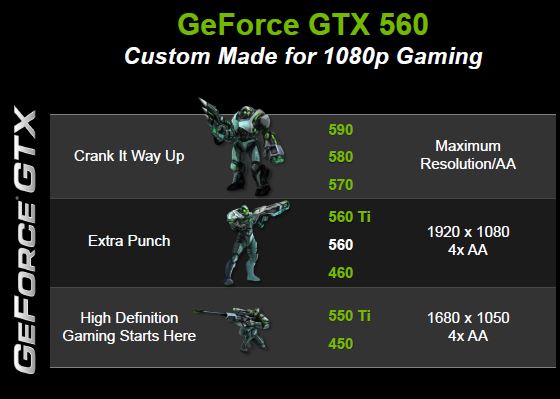
Note that the GF114 is a derivation of GF104. However, the GF114 packs a few improvements inherited from the GF110. The GF114 GPU received plenty of positive acclaim so far and we’ve seen that the card boasts nice performance-per-clock ratio as well. GTX 560 and GTX 560 Ti are based on the GF114, although the new card is slower due to some disabling within the GPU.
As you can see from the GPUZ shot below Gainward GTX 560 2048MB isn’t overclocked.
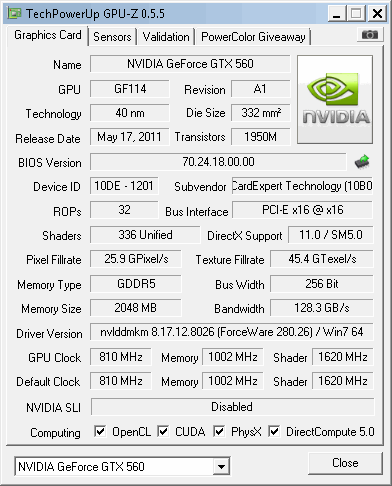
Before we cover details, let us show you Gainward’s complete GTX 560 offer.
Gainward Geforce GTX 560 1024MB "Phantom"
The Phantom is designed for those with a taste for maximum silence. Although factory overclocked by only 12MHz, powerful Phantom cooling will have you covered if you decide to push the card further.
Core Clock 822 MHz
Memory Size 1,024 MB
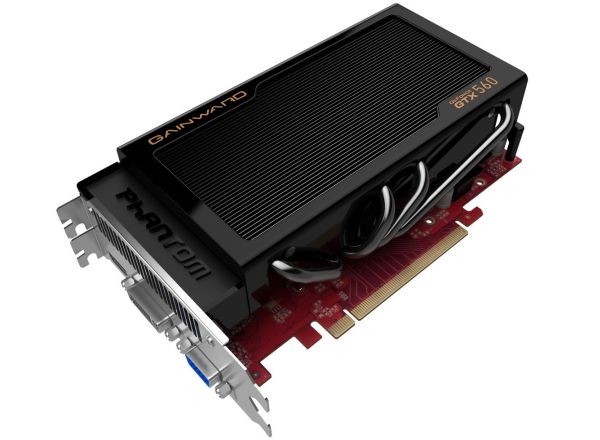
Gainward Geforce GTX 560 1048MB "Golden-Sample"
All Gainward’s GTX 560 cards come with special coolers. The Golden Sample’s cooling isn’t quite as fancy as the Phantom’s, but this doesn’t mean that the GS will not work well and quietly.
Core Clock 822 MHz
Memory Size 1,024 MB
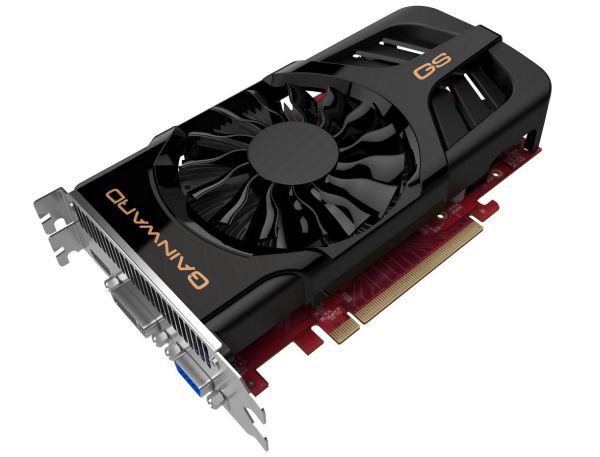
Gainward Geforce® GTX 560 1024MB
This is a card with less attractive cooling, but its performance trails Phantom and Golden Sample cards by only 12MHz.
Core Clock 810 MHz
Memory Size 1,024 MB
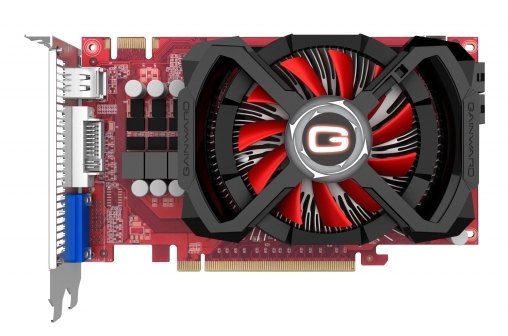
Gainward Geforce GTX 560 2048MB
This is the card on our test and you’ll find more details on the following page.
Core Clock 810 MHz
Memory Size 2,048 MB
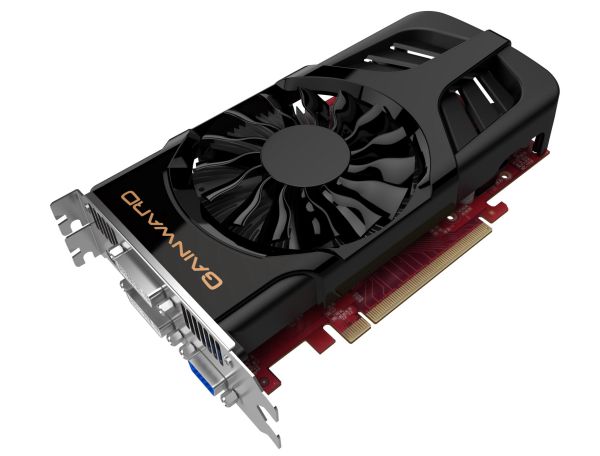
Below you see the Gainward GTX 560 2048MB packaging.
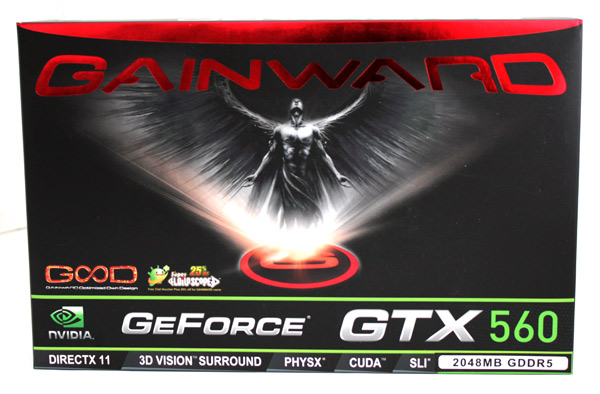
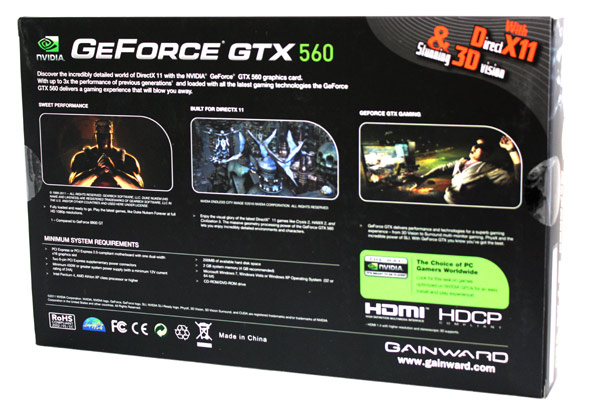

Inside you'll find a 6-pin connector, user's manual, LoiloScope vaucher and driver CD. There are no video converters because the card comes with three different video outs by default.
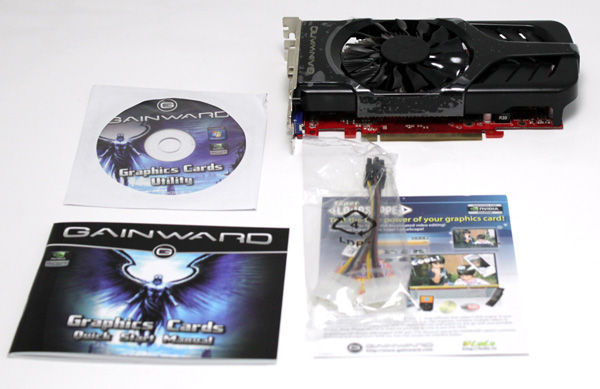
The reference GTX 560’s dual slot cooling has already proven its worth and it should take care of GTX 560 cards quite nicely, as well as remain quiet while doing so. Gainward still decided to offer a single high-performance cooler with a 9cm GR9 fan. Gainward uses identical cooling for its GTX 560 Golden Sample card.
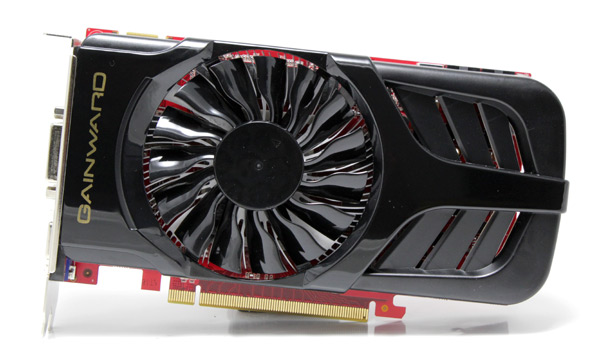
Gainward GTX 560 2048MB is about 20cm long.
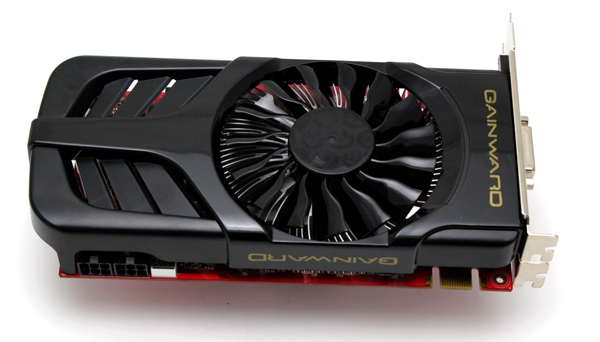
Gainward's GTX 560 2048MB card is two slots wide whereas the Gainward's GTX 560 Phantom card is 2.5 slots wide (we reviewed the Phantom here). As far as video outs go, Gainward decided to go with two dual link DVIs, HDMI and VGA out. Note that only two video outs can be used simultaneously. Reference GTX 560 card comes with two dual-link DVIs and a mini HDMI connector so if you're keen on using the standard HDMI, you'll need the mini-HDMI-to-HDMI adapter.
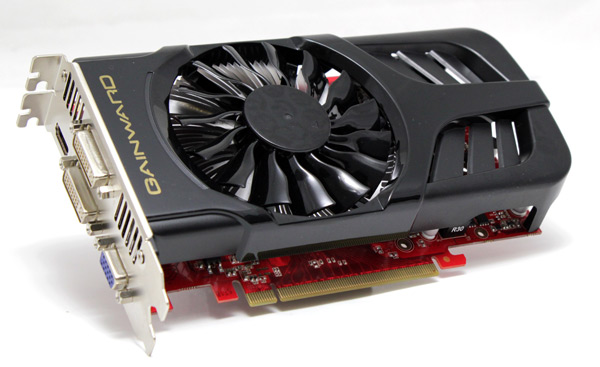
The card has two 6-pin PCI-Express power connectors.
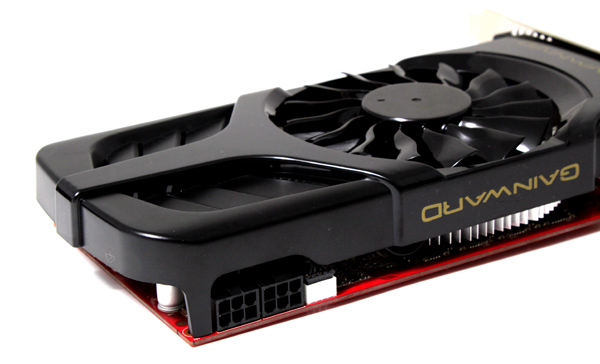
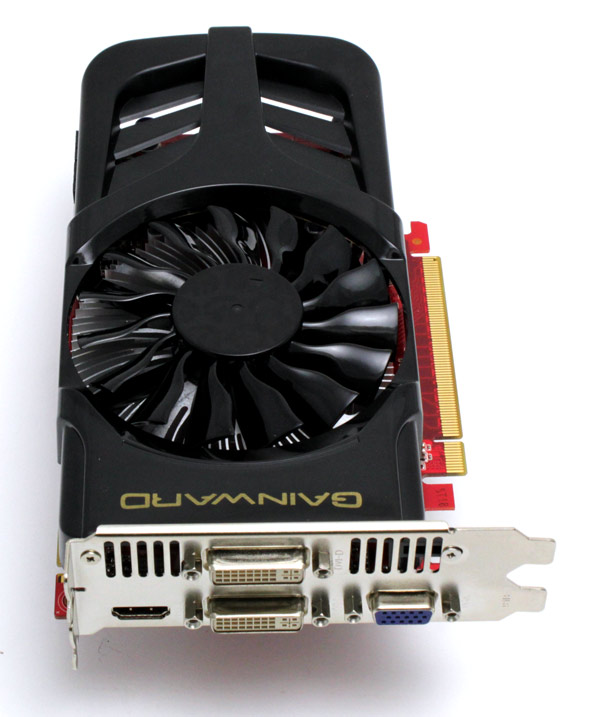
The fan is placed inside the large plastic frame.
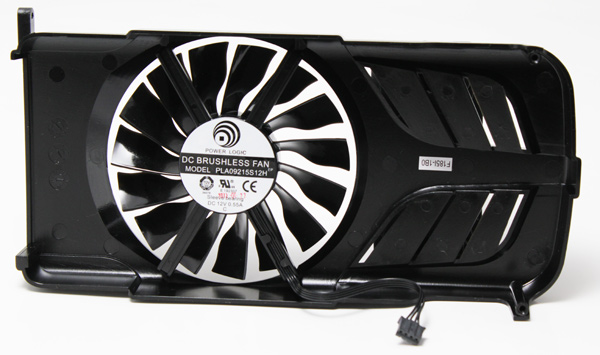
Gainward didn’t use heatpipes in this cooler and, as you can see, the aluminum heatsink leans directly on the GPU. The memory is passively cooled.
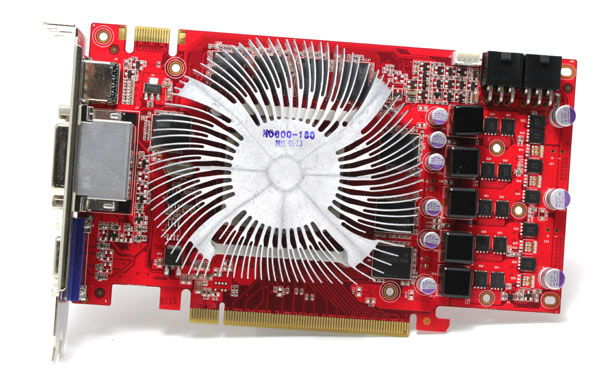
The memory chips used are K4G10325FE-HC04 parts from Samsung. They are specified to run at 1250 MHz (5000 MHz GDDR5 effective). OnSemi's NCP5395T is a cost-effective voltage regulator. It does not offer I2C voltage control, but VID based control is available through API in NVIDIA's driver.
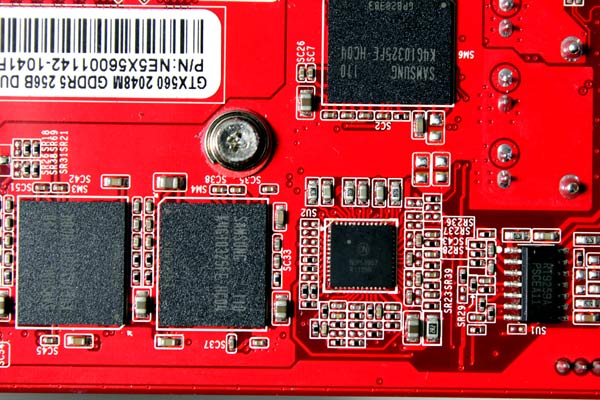
This Geforce GTX 560 uses 2048 MB video memory, and memory chips are placed on both sides of the card.
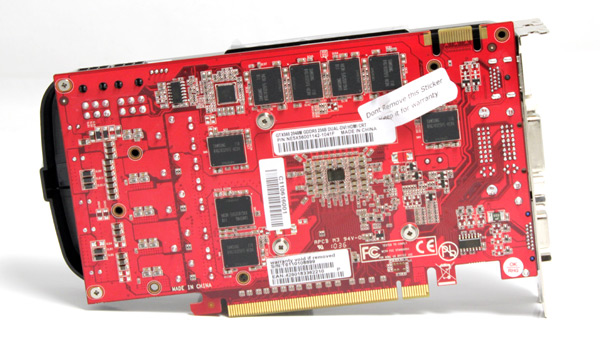
GTX 560 comes with one SLI connector. This means you can combine up to two GTX 560 cards in SLI mode for improved performance or image quality settings.
Test Setup
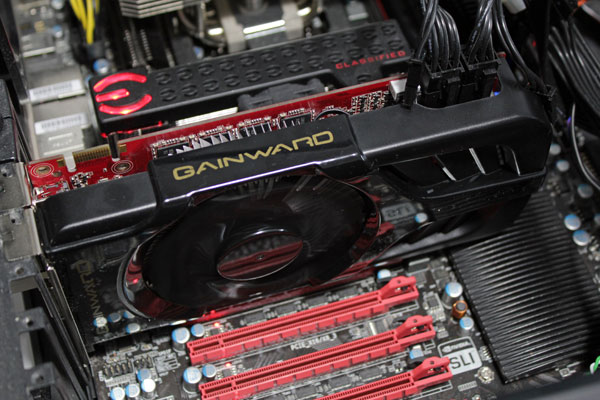
Motherboard: EVGA 4xSLI
CPU: Core i7 965 XE (Intel EIST and Vdrop enabled)
Memory: 6GB Corsair Dominator 12800 7-7-7-24
Harddisk: OCZ Vertex 2 100 GB
Power Supply: CoolerMaster Silent Pro Gold 800W
Case: CoolerMaster HAF X
Fan Controler: Kaze Master Pro 5.25"
Operating System: Win7 64-bit
Nvidia 280.26_desktop_win7_winvista_64bit
AMD 11.8 CCC
3DMark 2011 is the new Futuremark synthetic test that has proven to be pretty realistic when it comes to estimating the graphics cards' punch. The benchmark rated out test subject, the GTX 560 2048MB, as eaqual to GTX 560 1024MB. Our gaming tests will reveal whether 3DMark 2011 was right on the money.
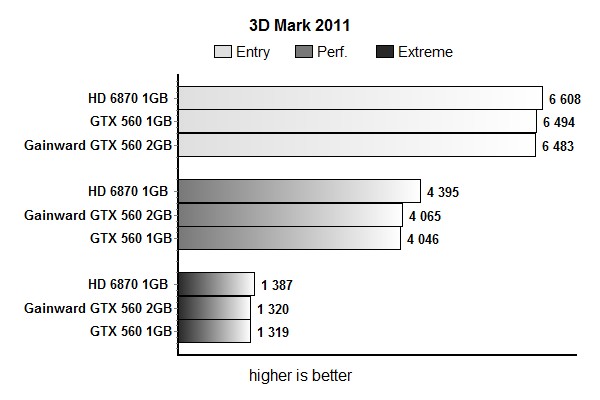
Aliens vs Predator
Even upping the resolution to 2560x1600 did not resulted in the GTX 560 2048MB performance leadership over GTX 560 1024MB.
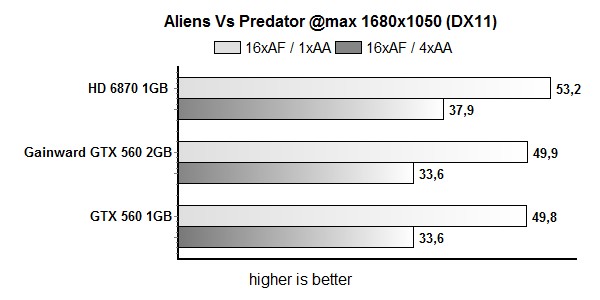

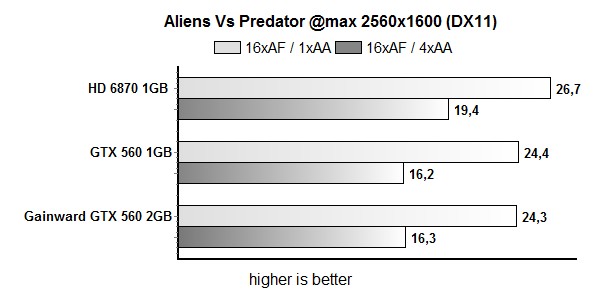
Dirt 2
Dirt 2 allowed for 2560x1600 gaming and, as you can see, there was no difference between 1GB and 2GB cards. As we said, only some games will actually report a performance difference between 1GB and 2GB versions of the GTX 560. You can check out the GPUZ shots below, which claim that Dirt2 is quite happy with 1GB memory buffers. On the other hand, Crysis 2 and Metro 2033 tend to like more memory, as they easily fill out 1.5GB of memory.
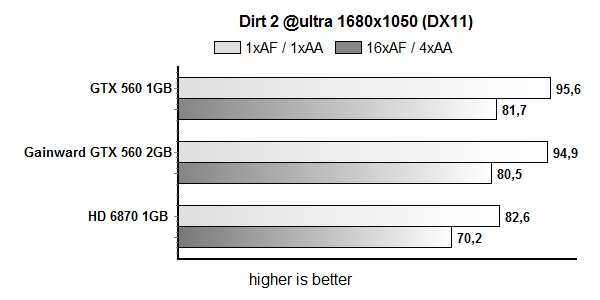
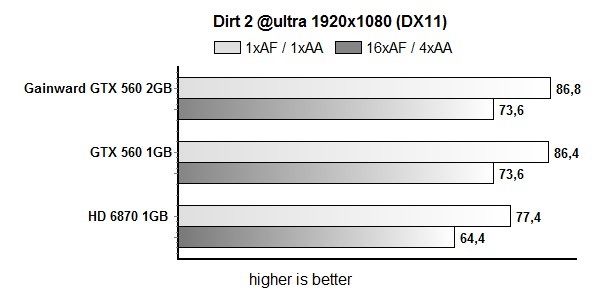
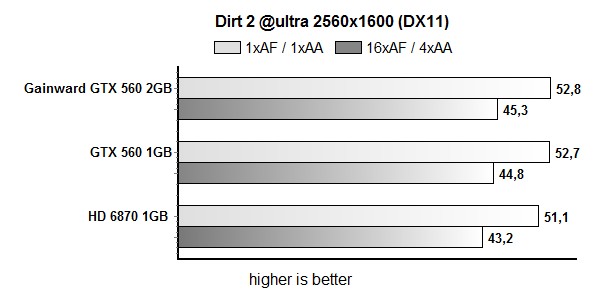
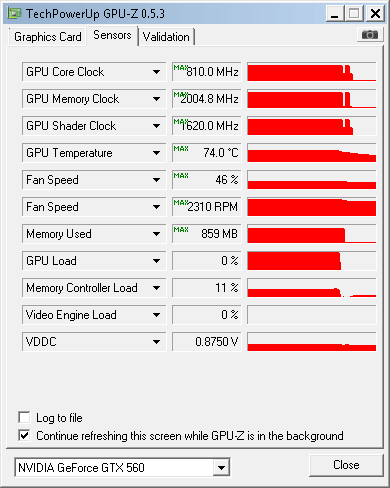
GTX 560 1024MB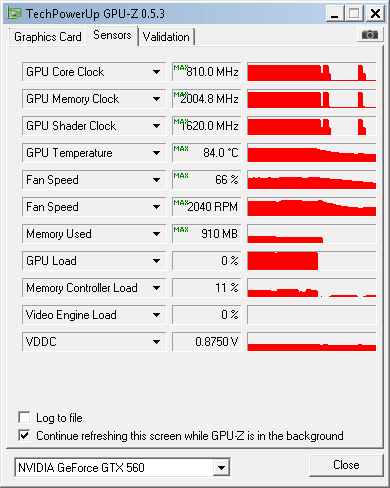
GTX 560 2048MB
Metro 2033
The GTX 560 2048MB allowed for pleasant 1920x1080 gaming in Aleins vs Predator and Dirt 2, even with maximum graphics settings, but Metro 2033 reminded that it's still a mid-range card. After all, maximum graphics settings in this game (without PhysX) are too much to bear for some high end cards, let alone midrange. However, that's not to say that gaming at 1080p with the GTX 560 is impossible - you'll just need to decrease detail settings.
You can see that Gainward GTX 560 2048MB at 2560x1600 is the only to score such a frame rate. The two cards with 1GB memory simply could not take what Metro 2033 had in store for them. 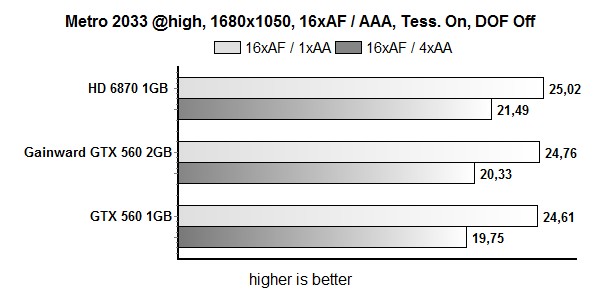
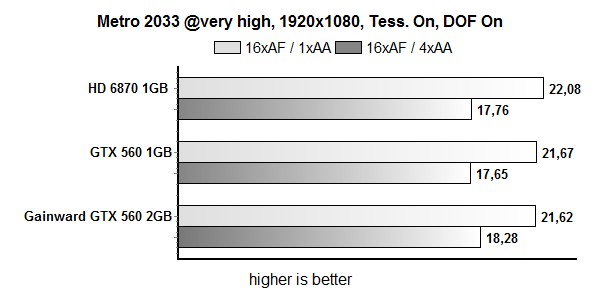
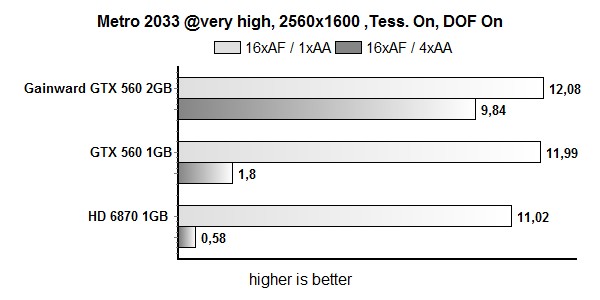
Crysis 2
We couldn’t see a performance difference between the GTX 560 cards despite using high-res textures. Still, we noticed during gaming that Gainward’s GTX 560 2048MB exhibited no stutters whatsoever, which wasn’t the case with the 1024MB version. GPUZ shows that Crysis 2 likes a hefty frame buffer, as the GTX 560 1024MB’s tends to be completely filled out.
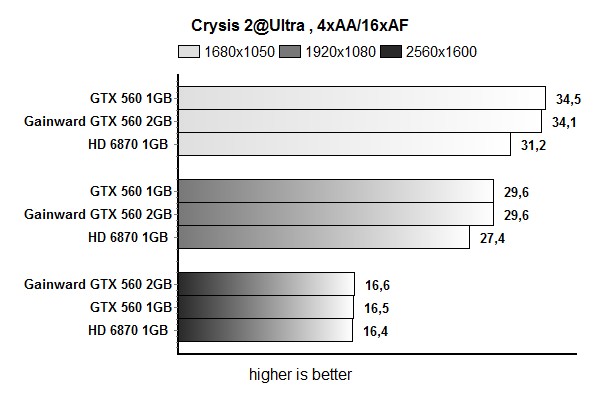
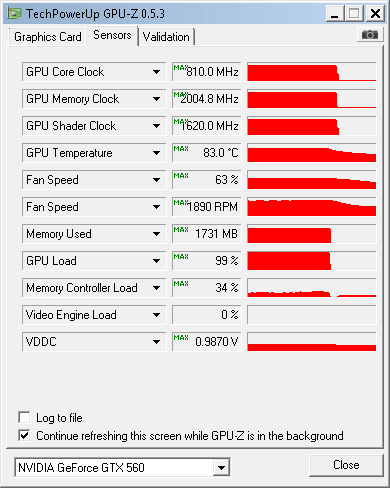
Gainward GTX 560 2048MB
As you can see from the picture below, even the GTX 560 2048MB’s memory buffer was filled out at one moment.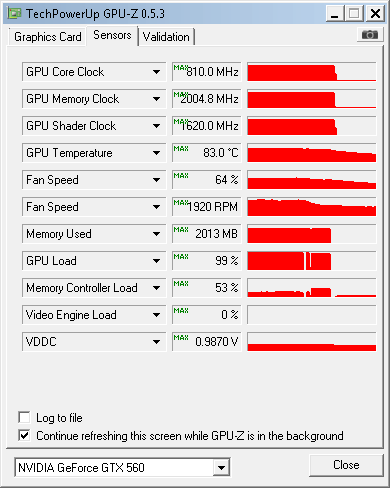
Unigine Heaven
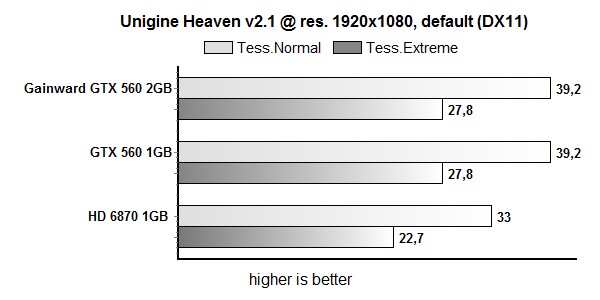
Overclocking
Overclocking the GF114 should not be a problem, regardless of whether it’s reference or specially designed GTX 560 Ti or GTX 560. Most GTX 560 Ti cards will run stable at 920+MHz. Gainward’s cooling provides a nice foundation for a healthy overclock and we got the following results. We managed to push the GPU from 810MHz to 930MHz. The memory ran at 1200MHz.
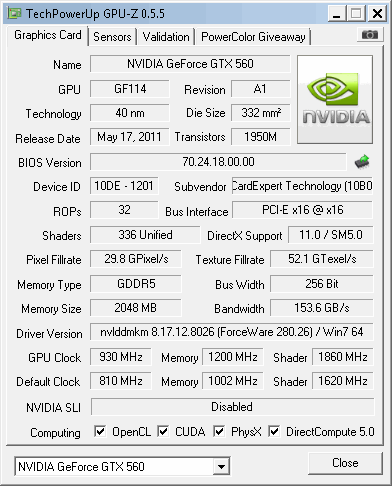
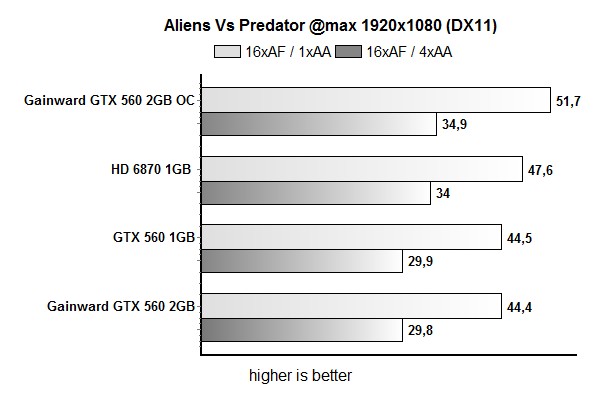
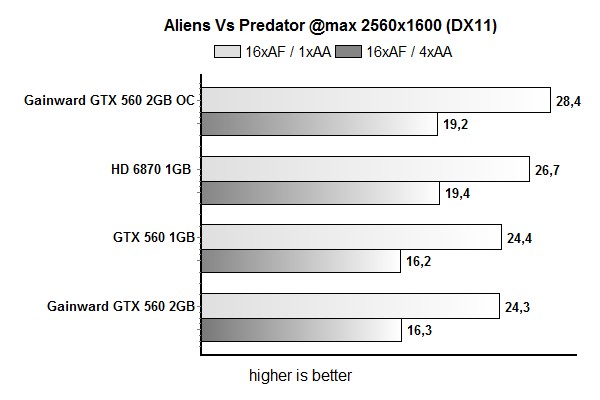
Thermals
The GTX 560 2GB is almost inaudible,. The card isn’t much louder than the reference cards when the GPU is under load, but we expected it to be quieter or at least the same.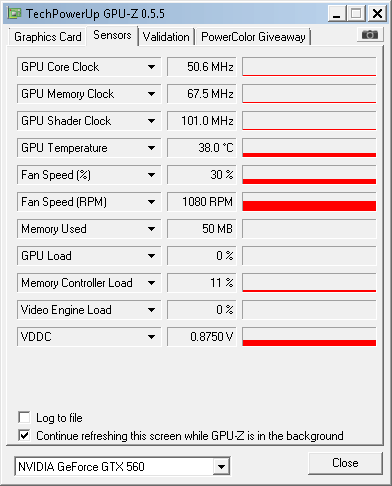

Power Consumption
Consumption is in line with reference GTX 560 cards, mostly due to the fact that Gainward GTX 560 2048MB runs at reference clocks.

Conclusion
We tested Gainward’s GTX 560 2048MB card, which does great at 1680x1050 and 1920x1080. Depending on the game and graphics settings, you could also hit 2560x1600 without stutters.
Twice the amount of memory found on reference cards will probably catch the eye of less experienced users, as 1024MB of memory will be enough in for most of GTX 560 gaming. Naturally, there are benefits to more memory, mostly when graphics settings are maxed out at 2560x1600. However, the GTX 560’s GPU simply isn’t fast enough to handle such frame rates so the few frames more that you get by doubling the memory will hardly make a difference. Additional memory can however come in handy to users who use special game modes or those who like downsampling.
The fact that Gainward’s special cooling isn’t quieter than reference cooling, although it isn’t much louder either, it is a bit underwhelming. The card is inaudible when idle. The GTX 560 2048MB comes with standard HDMI out, which, coupled with quiet idle mode, may attract multimedia computer owners.
If you manage to find Gainward’s GTX 560 2048MB priced at €15-20 more than the reference version, then there is no reason why you shouldn’t invest in the future. The lowest price we managed to find is €40 higher than the 1GB version, here.



